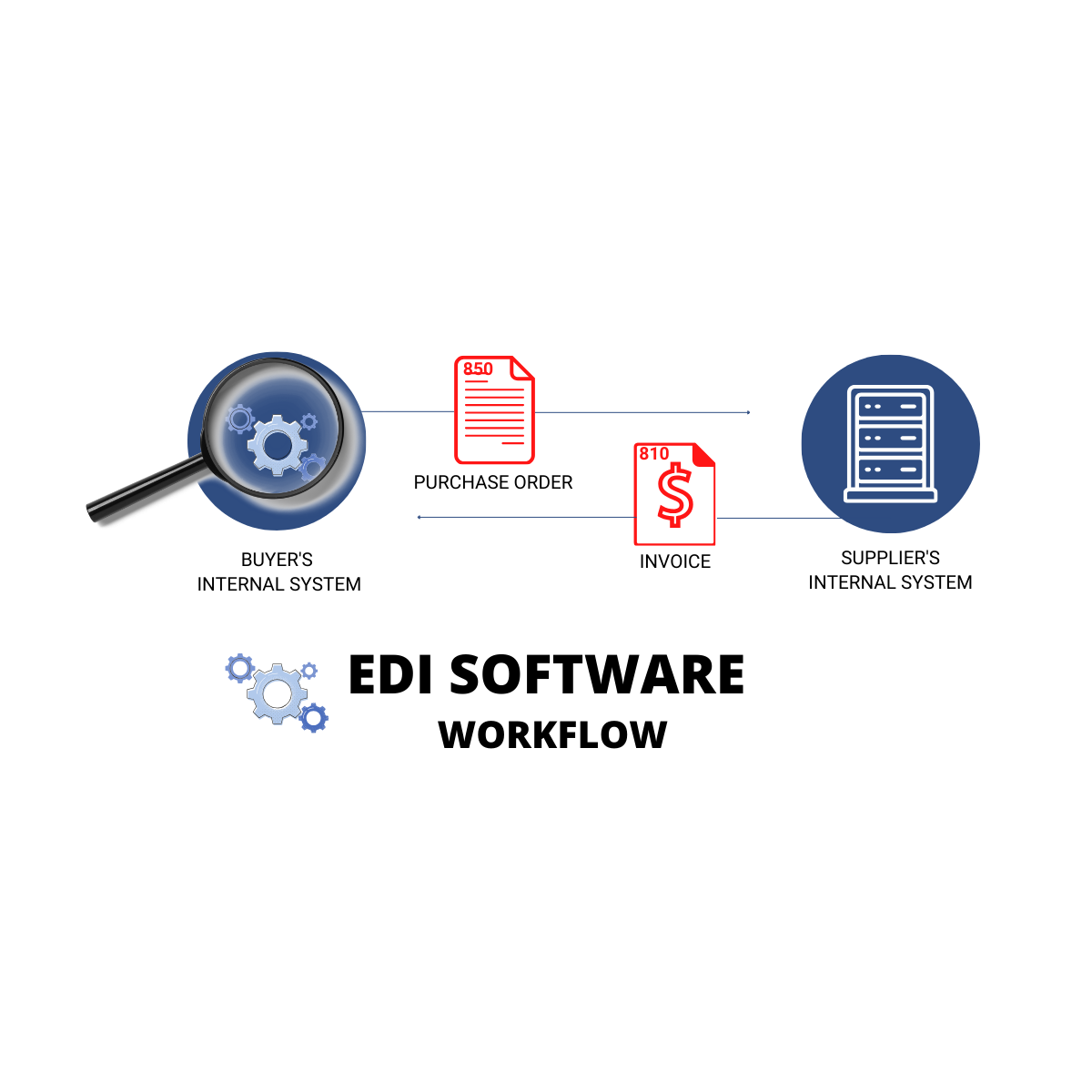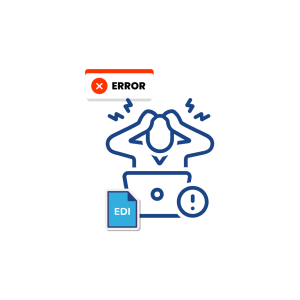Define EDI Software
EDI software is a tool that converts business data and information to trading partners in a standardized, structured, and paperless format that is compliant with EDI standards.
Data such as EDI 850 purchase order and EDI 810 invoice are in document format. Each document type has a standardized layout that displays and defines the information so it is easily understandable to all parties.
EDI software was created to lessen the procedural demands around industry trading processes such as shipping and mass product purchasing, purchase order (PO) generation, etc. Historically, invoices, POs, shipping information, etc. were manually generated between trading partners, this process was very time-consuming and had very high error rates.
To eliminate all these errors and to automate and speed up the document exchange process, businesses started using EDI software, a secure solution that significantly improves the document exchange process, as well as reduces the costs associated with manual data entry.
Key Features of EDI Software
EDI software comes equipped with a variety of features designed to facilitate seamless data exchange and improve business processes. Here are some of the key features:
Data Standardization: EDI software supports various standardized formats such as ANSI X12, EDIFACT, and XML, ensuring compatibility across different systems.
Automation: EDI automates the exchange of documents, reducing manual data entry and the risk of human error.
Integration: The software can be integrated with existing enterprise systems like ERP, CRM, and supply chain management software, providing a cohesive business infrastructure.
Security: Advanced security features protect sensitive business data during transmission, ensuring compliance with regulatory standards.
Scalability: EDI solutions are scalable, accommodating the growth and changing needs of a business without requiring significant overhauls.
How EDI Software Streamlines Business Transactions
EDI software streamlines business transactions by automating and standardizing the exchange of information. EDI software eliminates the need for paper documents, manual data entry, and the associated delays and errors. With EDI, businesses can process transactions in a fraction of the time, enhancing their operational efficiency.
One of the ways EDI software achieves this is through data mapping. Data mapping translates business data into a standardized format that both parties can understand. This ensures that information is accurately interpreted and acted upon, reducing the risk of miscommunication or errors. The software also facilitates real-time data exchange, allowing businesses to respond quickly to changes in demand or supply chain disruptions.
By streamlining these processes, EDI software not only enhances the speed and accuracy of transactions but also improves overall business agility. This is particularly important in today’s dynamic business environment, where companies must be able to adapt quickly to remain competitive.
Choosing the Right EDI Software for Your Business
Selecting the right EDI software is crucial for maximizing its benefits. When evaluating EDI solutions, consider the following factors:
Scalability: Ensure the software can grow with your business. It should accommodate future expansion without requiring significant upgrades.
Integration Capabilities: The software should seamlessly integrate with your existing systems, such as ERP and CRM platforms, to provide a unified infrastructure.
Support and Training: Choose a vendor that offers robust support and training to ensure a smooth implementation and ongoing operation.
Cost: Consider both the initial investment and ongoing EDI costs. Look for a solution that offers a good balance between cost and functionality.
By carefully evaluating these factors, you can choose an EDI solution that meets your current needs and supports your long-term business goals.
Benefits of EDI Software
There are many benefits to deploying an EDI system. Electronic Data Interchange (EDI) follows a certain set of standards that allow the sender’s documents to flow straight through to the intended application on the receiver’s end. This enables the processing and return of documents to be accepted and processed immediately. An EDI system not only saves time and money but also enables close collaboration between trading partners and helps build customer satisfaction and loyalty.



Time-Saving
A reduction in errors and delays due to little to no human intervention. Along with the adoption of a common language, equals faster communication
Cost Savings
Order processing errors can be very costly. By cutting the costs associated with sending physical documentation (via fax, email etc), EDI software reduces the spending related to generating and distributing data.
Efficiency and Accuracy
Using EDI reduces errors and optimises the processing speed, while also improving the security and traceability of exchanges.
Different Types of EDI Software
1. Cloud-based EDI software
A cloud-based EDI solution will make important data readily available to any permitted users with an internet connection, enabling remote business partners to access data regardless of their location.
2. Integrated EDI Software
An Integrated EDI solution translates your inbound documents, like purchase orders, from your trading partners’ EDI files into a format that can be imported directly into your ERP, accounting, or other business system.
Conclusion
The adoption of EDI software has become increasingly essential for businesses seeking to optimize their supply chain processes and stay competitive in the modern digital landscape. EDI facilitates seamless and automated exchange of business documents between trading partners. It plays a pivotal role in enhancing efficiency, reducing errors, and improving communication in various industries
Explore Commport EDI Software Solutions
Need Help? Download: EDI Buyers Guide
Unlock the full potential of your supply chain with our comprehensive EDI Buyer's Guide — your first step towards seamless, efficient, and error-free transactions
Frequently Asked Questions
EDI software enables the electronic exchange of business documents, such as invoices and purchase orders, between trading partners. It eliminates the need for traditional paper-based communication, promoting faster, more accurate, and efficient data exchange.
EDI software streamlines communication between businesses, suppliers, and customers, leading to improved supply chain visibility and efficiency. It automates document exchange, reduces manual errors, and enhances the overall speed of transactions, making supply chain processes more agile.
EDI software prioritizes security through encryption and secure communication protocols. This ensures that sensitive business data exchanged between trading partners is protected from unauthorized access, maintaining the confidentiality and integrity of the information.
EDI software is beneficial for businesses of all sizes. While larger enterprises may have more complex supply chain needs, even small businesses can leverage EDI to automate transactions, reduce manual efforts, and enhance communication with partners, leading to increased operational efficiency.
Yes, modern EDI software is designed to integrate seamlessly with existing business systems, such as Enterprise Resource Planning (ERP) and Warehouse Management Systems (WMS). This integration ensures a smooth flow of information between different components of the business, optimizing overall operations.





